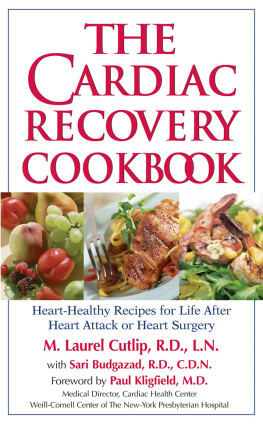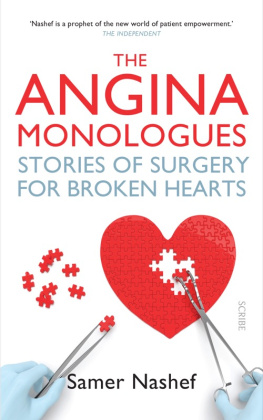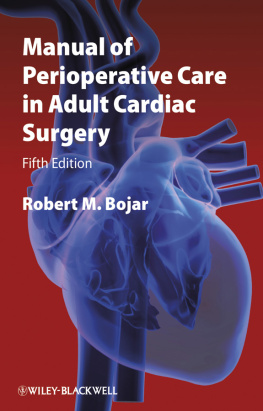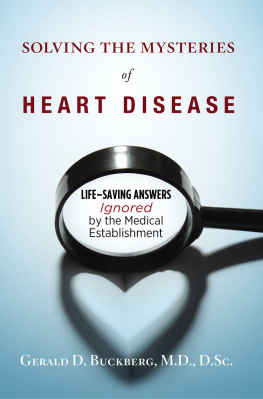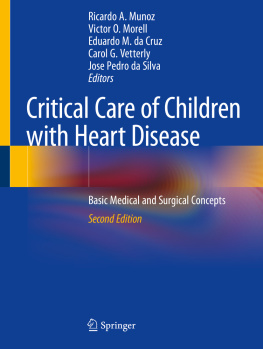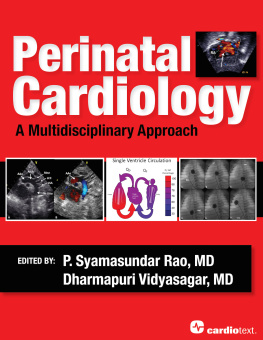Broken Hearts
BROKEN HEARTS
The TANGLED HISTORY of CARDIAC CARE

DAVID S. JONES

2013 The Johns Hopkins University Press
All rights reserved. Published 2013
Printed in the United States of America on acid-free paper
9 8 7 6 5 4 3 2 1
The Johns Hopkins University Press
2715 North Charles Street
Baltimore, Maryland 21218-4363
www.press.jhu.edu
Library of Congress Cataloging-in-Publication Data
Jones, David S. (David Shumway)
Broken hearts : the tangled history of cardiac care / David S. Jones.
p. ; cm.
Includes bibliographical references and index.
ISBN 978-1-4214-0801-9 (hdbk. : alk. paper) ISBN 1-4214-0801-5 (hdbk. : alk. paper) ISBN 978-1-4214-0802-6 (electronic) ISBN 1-4214-0802-3 (electronic)
I. Title.
[DNLM: 1. Myocardial Infarctionphysiopathology. 2. Atherosclerosisphysiopathology. 3. Cardiovascular Surgical Proceduresadverse effects. 4. Myocardial Infarctioncomplications. 5. Postoperative Complicationsetiology. WG 300]
616.1237dc23 2012018227
A catalog record for this book is available from the British Library.
Special discounts are available for bulk purchases of this book. For more information, please contact Special Sales at 410-516-6936 or specialsales@press.jhu.edu.
The Johns Hopkins University Press uses environmentally friendly book materials, including recycled text paper that is composed of at least 30 percent post-consumer waste, whenever possible.
Contents
Figures
Preface
When I had cancer a few years ago, I was lucky in many ways. I faced no difficult decisions. As soon as the radiologist confirmed the existence of the fist-sized tumor I had first felt near my stomach, the course was clear. The tumor had to be removed. A kind surgeon quickly obliged, and I was tumor-free in ten days. When genetic analysis revealed that the tumor was not susceptible to any chemotherapy, I was spared another decision: there was no reason to try an expensive pharmacological treatment of uncertain value. Instead, I watch and wait and hope. If the cancer comes back, my surgeon has promised to try to remove it once again.
Something about all this appealed to the historian in me. Mine was cancer therapy as it existed in the 1890s: find a tumor, cut it out, and hope for the best. That way of therapeutic thinking has an elegant logic and simplicity. Few areas of medicine today retain such clarity of purpose and action. I now face much more complicated decisions as an otherwise healthy 42-year-old than I did as a cancer patient. Fear of heart disease creates most of the trouble. Should I start taking a baby aspirin to prevent a heart attack? If not now, at what age? What about a statin to reduce the risk that one of my atherosclerotic plaques will rupture? I do not actually know that I have any, but as an American male, I almost certainly do. I could go to a local imaging center and purchase a CT angiogram of my coronary arteries, but this might open a can of worms. Am I ready to commit myself to a life of multiple prophylactic medications to preserve my cardiac health? And what if I ever did feel a twinge of angina? Then the dilemmas really become difficult.
The decisions that all people now face, from the vitamins, supplements, and medications we take to preserve our health, to the drama of surgery and intensive care, reflect fundamental changes in medical knowledge and practice over the past half century. The capacity and complexity of medicine have been transformed. Yet the many blessings have brought their own share of curses. Patients and doctors in the early twenty-first century face exceedingly difficult treatment decisions. Will a treatment work? In what ways? How well? Is it safe? How does it compare to other options? What other factors, whether cost or quality of life, ought to be considered? Uncertainty dogs the effort to answer each of these.
This book offers a historical perspective on the complexity of medical decision making. It uses the history of coronary artery bypass surgery and coronary angioplasty to expose vexing ambiguities that persist at the core of the medical enterprise, in particular the challenge of producing definitive knowledge about the efficacy and safety of medical treatments. This is a story about medical discovery, but one focused on the decision dilemmas created by the emergence of these two new treatments. An appreciation of their complexity, as seen through history, can help patients and doctors make more careful and deliberate decisions. New discoveries in the future may leave patients with easier and better choices. But it is unlikely that decision making will ever be just a question of medical knowledge and practice. Instead, medical decisions always involve priorities, values, and preferences. This history, as a result, can offer valuable lessons to historians, doctors, patients, and policy makers.
Acknowledgments
This book is one piece of a much larger research project, in pursuit of which I have accumulated countless debts. Robert Martensen first set me working on the problem of coronary revascularization when I was a medical student in 1993. Albert Mulley contacted me ten years later and encouraged me to pursue questions I had initially left unanswered. His insight and support have been invaluable ever since. The research, amid teaching commitments at both the Massachusetts Institute of Technology and Harvard Medical School, would not have been possible without the tireless effort of my research assistant, Katherine Shera. Several other students, at MIT, Harvard Medical School, and Wellesley College, have also worked on pieces of this research, including Xaq Frohlich, Sonya Makhni, Catherine Mancuso, Michael Matergia, Benjamin Oldfield, Michael Rossi, Nicolle Strand, and Emily Wanderer.
Many archivists have generously made their collections accessible for study. I would especially like to thank Pam Cornell and Alethea Drexler, at the McGovern Historical Collections and Research Center; Jack Eckert, at the Countway Medical Library; Marjorie Jackson, at the Library and Learning Resource Center at the Texas Heart Institute; Fred Lautzenheiser and Carol Tomer, at the archives of the Cleveland Clinic Foundation; Pamela Miller and Lily Szczygiel, at the Osler Library for the History of Medicine at McGill University; Cathy Pate and Anne Fladger, at the archives of the Brigham and Womens Hospital; and JoAnn Pospipil, at the Baylor College of Medicine Archives.
I have benefited from colleagues with an extremely helpful diversity of interests and expertise in Boston. The Program in Science, Technology, and Society at MIT provided my primary base. There I enjoyed the mentorship of and collaboration with Caspar Hare, Stefan Helmreich, David Kaiser, Vincent Lepinay, David Mindell, Heather Paxson, Natasha Schull, and Rosalind Williams. At the Department of Global Health and Social Medicine at Harvard Medical School, I have learned much about medicine and social justice from many colleagues, especially Anne Becker, Gene Bukhman, Leon Eisenberg, Paul Farmer, Jeremy Greene, Salmaan Keshavjee, Jim Yong Kim, Ed Lowenstein, Joia Mukherjee, Scott Podolsky, Joseph Rhatigan, and Sadath Sayeed. Allan Brandt and Charles Rosenberg, at the Department of the History of Science at Harvard University, remain ever generous with their knowledge and wisdom.
Next page


